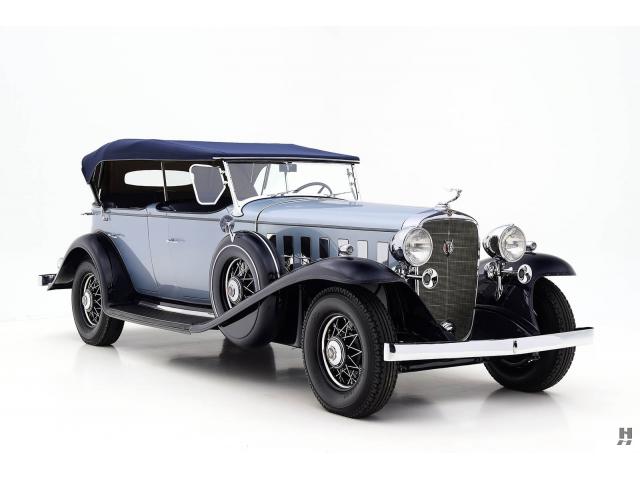1932 Cadillac V-16 Special Phaeton
- Brand: Cadillac
1932 Cadillac V-16 Special Phaeton
The clandestine development of the Cadillac V16 was an amazing accomplishment for an organization the size as General Motors and one that relied on a vast array of outside suppliers and contractors. Despite the two years that had been spent on the design, research and development, there was no way to predict that shortly after its arrival, the luxury car segment would nearly disappear due to the Great Depression.
Cadillac President Lawrence Fisher sent a letter to his dealers and the motoring press in December of 1929 announcing the introduction of the sixteen cylinder Cadillac and its public display at the New York International Automobile Show in January. The first three models were ready for the January New York Auto Show and the response was very favorable. Orders far exceeded expectations and by April the 1000th V16 had been shipped.
With the arrival of the V16 engine, it brought about the so-called 'cylinder wars', with luxury markets from both Europe and America competing to capture the attention of a shrinking pool of wealthy clientele. Cadillac's solution to the large and heavy coachwork that customers were demanding were more cylinders, larger displacements, and higher compression. Cadillac used a small 3-inch bore, allowing the cylinders to rest close to one another, minimizing the engine and crankshaft's length. The crank ran in five main bearings which (along with the short crank) helped reduce noise. Overhead valves with hydraulic clearance adjustment also reduce nose, provided reliable operation, and offered easy maintenance. Having a 3-inch bore and 4-inch stroke, the V16 engine was compatible with Cadillac's existing driveline and transmission. The 45-degree vee angle allowed it to fit under the hood.
The impressive engine demanded equally impressive coachwork. The man in charge was the recently hired Harley Earl. Mr. Earl had fine-tuned his talents at his father's company, Earl Coachworks, in Los Angeles. After it was acquired by Don Lee, Earl's work caught the attention of Cadillac President Larry P. Fisher. Earl was hired by GM to design the LaSalle, and his work on that project convinced management to appoint him as head of their new Art and Colour Department.
Among the tasks assigned to the Art and Colour department was to make the V16 engine visually appealing. They accomplished this by hiding and covering many of the components. The spark plug wires traveled from the distributor to the plugs under covers and there were no exposed oil lines. The valve covers, manifolds, and even carburetors were monochromatic. The entire executive of this task was thoroughly modern, carefully detailed, and refined.
Production of the V16 continued through 1931 with only minimal changes. In 1932, the V16 was redesigned with longer, lower bodies and freestanding headlights among other updates. In 1932, only 296 examples of the V16 were built, a dramatic decrease from the nearly 3,000 examples that had been built in 1930 and 1931. 41 body styles were offered with coachwork handled by Fisher or Fleetwood. Wheelbases measured 143-, 149-, and 165-inches.
1932 was the final year for the flat radiator grille and open front fender style.
4,076 examples of the Cadillac V16 were built over a period of 11 years.
Descriptions & Pictures by conceptcarz & hymanltd
| Specification | |
| Production Start | 1932 |
| Country of origin | USA |




































